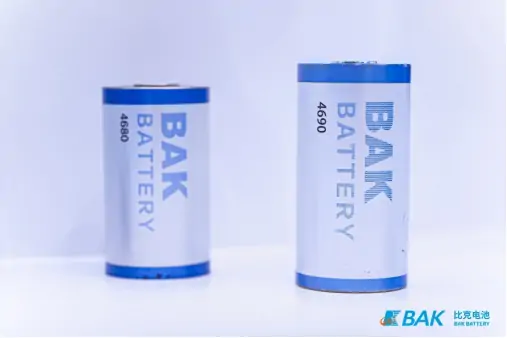 |
Welcome To Evlithium Best Store For Lithium Iron Phosphate (LiFePO4) Battery |
 |

The acceleration of new energy vehicles and the steady growth of the foundational market mark the onset of a new era in the wake of energy structure transformation and heightened carbon emission regulations. At the GGII Lithium Battery Annual Conference on November 21, Dr. Xu Yan, representing BAK Battery, shared insights into the ongoing global battery revolution and the strategies adopted by Chinese battery companies in his keynote address.
Dr. Xu Yan emphasized, "Fueled by technological innovations, industrial advancements, and evolving market demands, there's a paradigm shift from adequacy to excellence. Leading application enterprises, especially frontline automotive companies, are demanding increasingly stringent specificationsí¬seeking batteries that promise heightened safety, superior energy density, rapid charging capabilities, and cost efficiency." In this trajectory, cylindrical batteries are poised to capture a larger market share due to their standardized design, exceptional safety features, and outstanding performance in energy density and charging rates.
Among these cylindrical batteries, large cylindrical variants (including 3 series, 4 series, 6 series, etc.) will spearhead substantial growth in the cylindrical battery market. Data from the GGII Lithium Battery Research Institute illustrates that China's cylindrical battery shipments in 2022 totaled 32GWh, marking a 0.7% year-on-year increase. Forecasts predict that China's cylindrical battery shipments will surge to 789GWh by 2030, with an anticipated compound annual growth rate of 49% over the next 8 years.
Lithium battery innovation branches into two primary categories: material system innovation and structural process innovation. Dr. Xu Yan underlined that the dual advancements and innovation prospects in large cylindrical batteries' material systems and structural processes will steer the development of next-generation new energy vehicle batteries, shaping the forthcoming global battery market dynamics.
"Large cylindrical batteries typically employ pressure-resistant casings, particularly with the use of high-strength steel materials, enabling the adoption of the most cutting-edge material systems available in the market. With heightened safety thresholds, large cylinders can accommodate higher energy-density chemical material systems, transitioning from lithium iron phosphate to high-nickel ternary lithium compositions, from liquid electrolytes to semi-solid and solid electrolytes. The larger form factor also accommodates more active materials, thus enhancing overall battery performance," elaborated Dr. Xu Yan. Structural innovation will revolve around shell materials, full-tab configurations, packaging formats, among other aspects. BAK is currently exploring third-generation large cylindrical structural designs, pushing the envelope for mature, high-speed, and cost-effective structural designs.
Moreover, enhanced production efficiency stands as a pivotal factor in the future of large cylindrical batteries. Current data from the GGII Lithium Battery Research Institute suggests that the production efficiency of the 4680 large cylindrical battery ranges from 50 to 150 parts per million (ppm). This represents a 3 to 10 times increase in single-line production capacity compared to small cylindrical batteries, leading to significant economies of scale in labor costs and fixed assets. With ongoing advancements in large cylindrical technology, the efficiency is projected to reach 300 ppm, and the single-line annual production capacity is anticipated to rival square batteries. The lower equipment investment for large cylindrical batteries compared to square batteries is expected to yield slightly lower manufacturing costs after achieving economies of scale.
Since the domestic debut of the 4680 full-tab large cylindrical battery in 2021, BAK Battery has persistently delved into the research and development of large cylindrical technology. BAK Battery will unveil its representative first-generation product, scheduled for mass production in 2024, boasting an energy density exceeding 280Wh/kg, while supporting 4C fast charging. This high-performance trajectory will initially prioritize lightweight designs and continual optimization of chemical systems, ultimately achieving an energy density exceeding 300Wh/kg. Within three years, BAK aims to introduce a quasi-solid-state product surpassing 330Wh/kg in energy density.
Edit by editor
All Rights reserved © 2025 Evlithium Limited